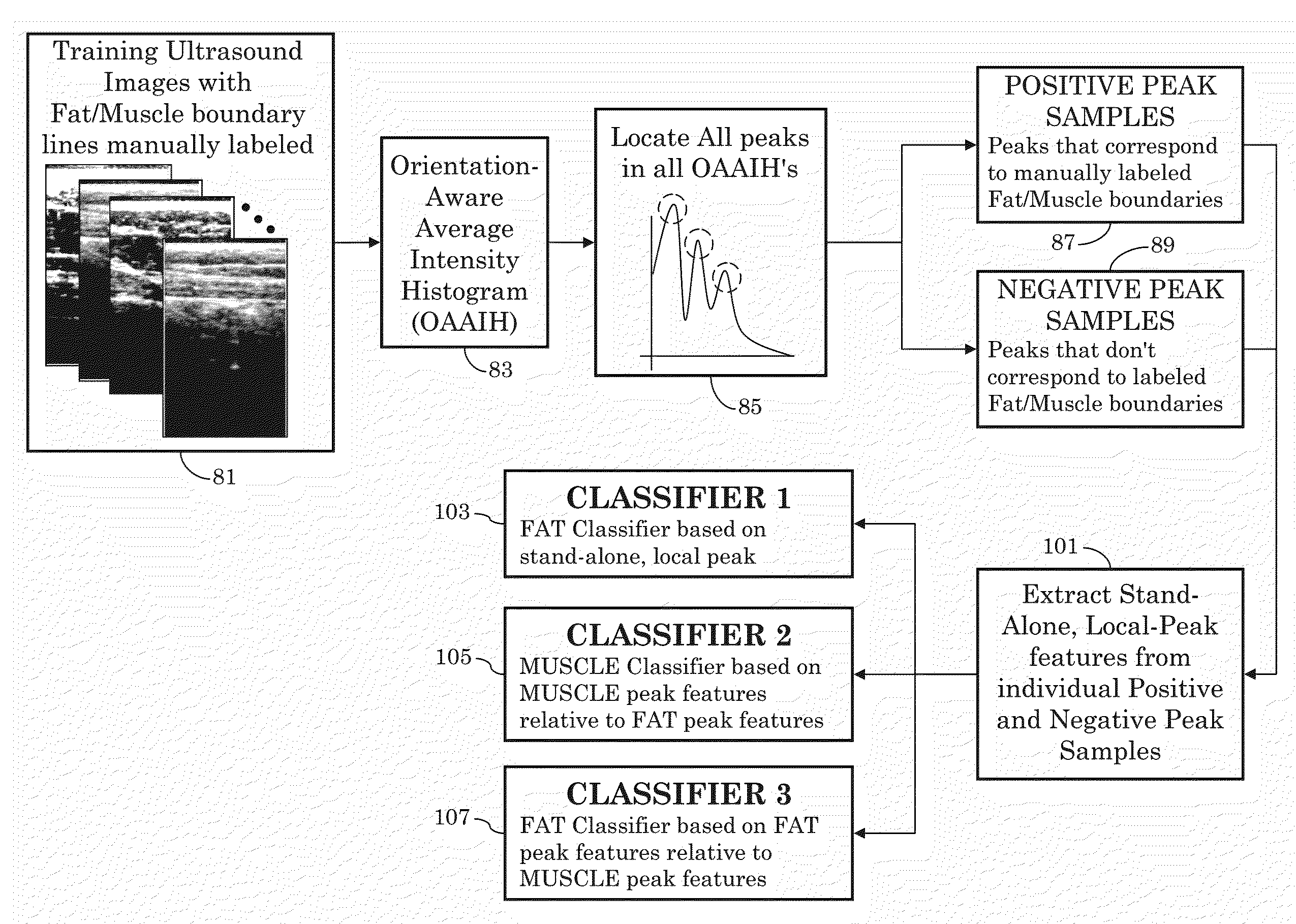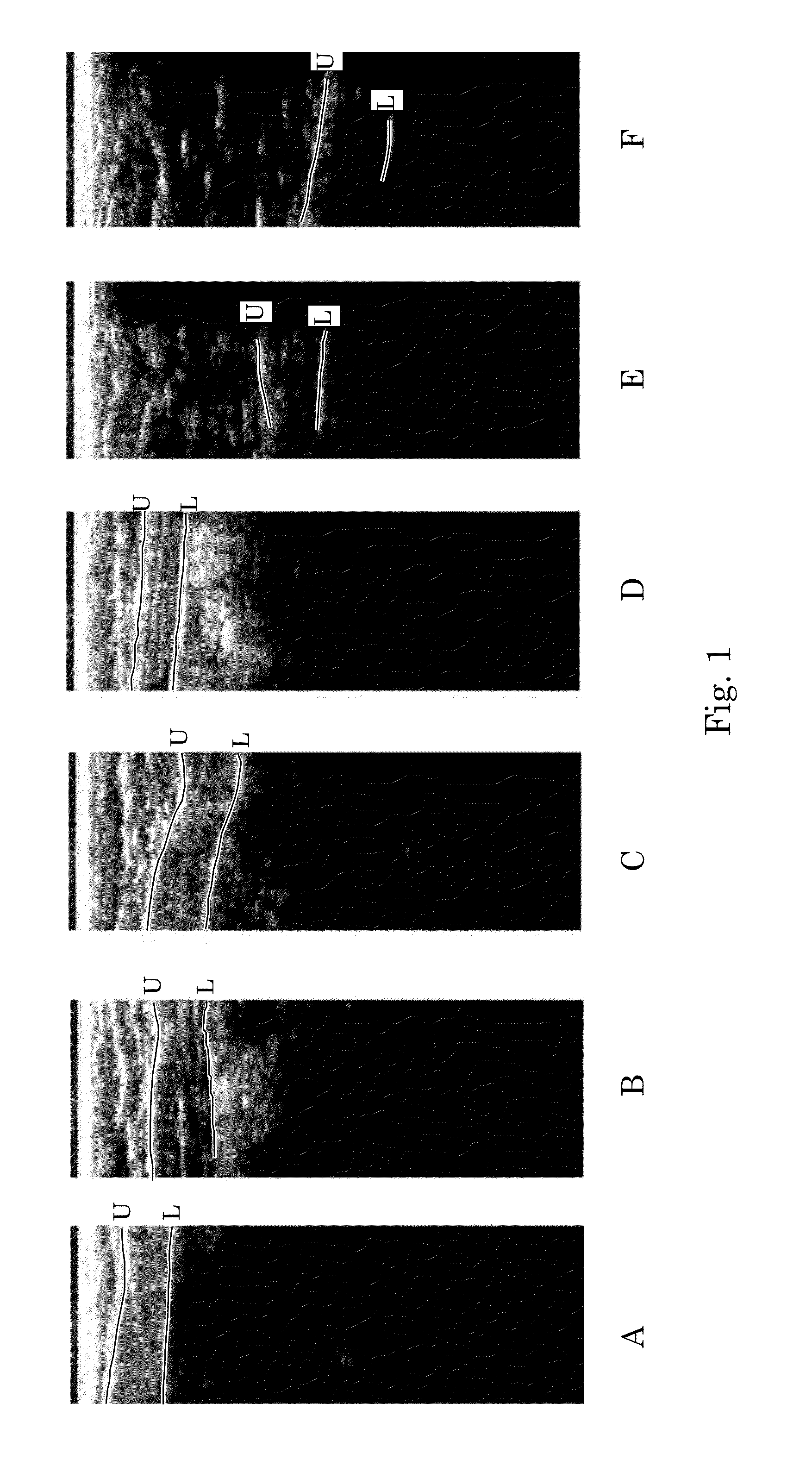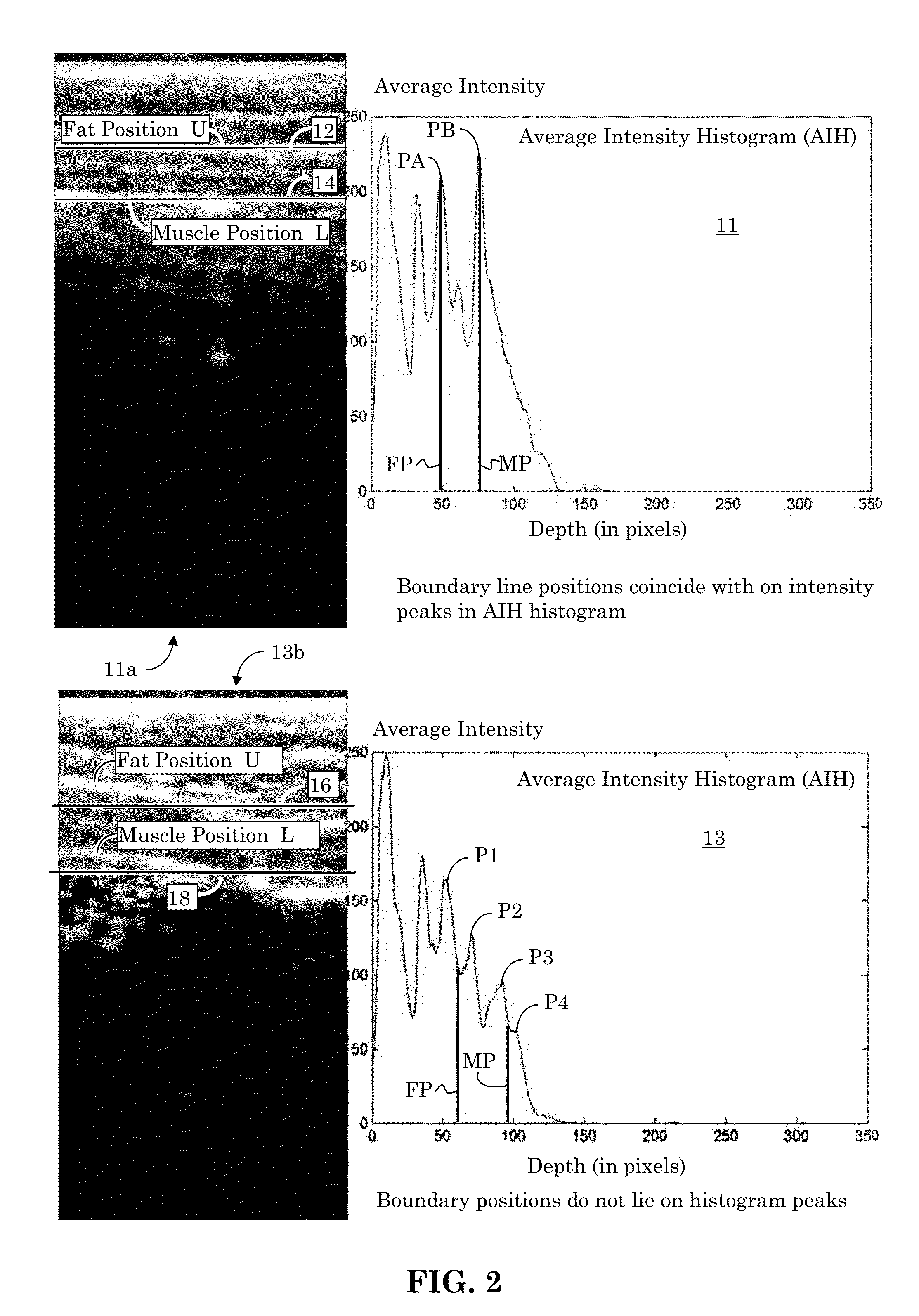Ultrasound image object boundary localization by intensity histogram classification using relationships among boundaries
an ultrasound image and boundary localization technology, applied in the field of ultrasonic imaging, can solve the problems of large volume, large volume, and inability to image the full object, and achieve the effect of small weigh
- Summary
- Abstract
- Description
- Claims
- Application Information
AI Technical Summary
Problems solved by technology
Method used
Image
Examples
Embodiment Construction
[0047]Measuring object boundary depths, such as the boundary depth of a fat layer (or fatty tissue layer) and / or the boundary depth of a muscle layer (or muscle tissue layer) using ultrasound images is important for health care, medical diagnosis, obesity control, general fitness, etc. Boundary localization of objects, or of different tissue types, within ultrasound images is important for determination of the boundary depth of tissue layers.
[0048]Identifying these boundary depths, however, is challenging due to ultrasound images being highly noisy. Further complicating matters is that fat and muscle boundaries can be at various depths and shapes across different people. The identification of boundary lines is further complicated due to the shapes and image texture of fat and muscle boundaries both being highly variable.
[0049]FIG. 1 provides multiple examples A, B, C, D, E, and F of ultrasound images of an abdominal area. Bright pixels typically delineate the boundary regions betwee...
PUM
 Login to View More
Login to View More Abstract
Description
Claims
Application Information
 Login to View More
Login to View More - R&D
- Intellectual Property
- Life Sciences
- Materials
- Tech Scout
- Unparalleled Data Quality
- Higher Quality Content
- 60% Fewer Hallucinations
Browse by: Latest US Patents, China's latest patents, Technical Efficacy Thesaurus, Application Domain, Technology Topic, Popular Technical Reports.
© 2025 PatSnap. All rights reserved.Legal|Privacy policy|Modern Slavery Act Transparency Statement|Sitemap|About US| Contact US: help@patsnap.com



